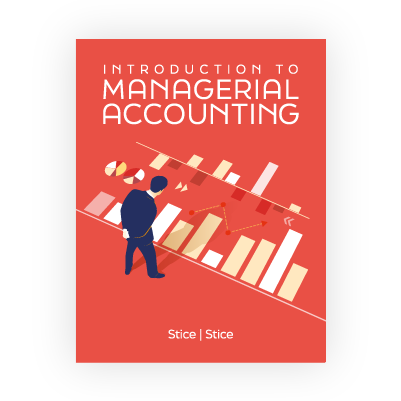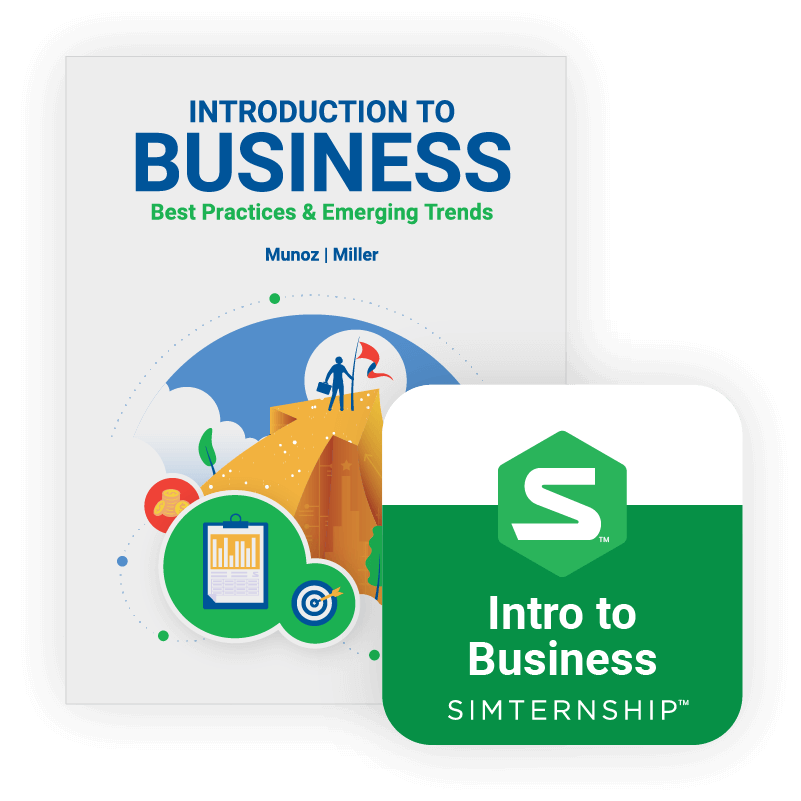
The “Introduction to Managerial Accounting” Courseware
A cutting-edge curriculum backed by decades of experience
The “Introduction to Managerial Accounting” courseware gives you everything you need to teach a great course. This courseware contains ready-made resources, including:
- Engaging explanatory videos from the authors
- Auto-graded quizzes and assignments
- Turnkey lesson plans
- Lecture slide decks
- A sample course calendar
- And more!
Together, authors Dr. Earl K. Stice and Dr. James D. Stice have more than 70 years of experience teaching accounting. They bring a practical, hands-on approach to modern accounting subjects, providing you with the resources to teach an authoritative course in less prep time.

Courseware that thinks
outside the textbook
Stukent courseware goes beyond the limitations of the printed textbook, pairing powerful instructional resources for you with an annually updated, concise text for students.
The “Introduction to Managerial Accounting” courseware isn’t a textbook; it’s a turnkey accounting curriculum with a full suite of educational tools. You’ll get instructional videos from the authors, auto-graded assignments and assessments, lecture slide decks, lesson plans, and so much more.
Managerial Accounting Table of Contents
Medical Supplies; a Peruvian Restaurant; Panaca, Nevada; and Walmart
I Paid the Restaurant $18, But How Much Did My Meal Cost Them to Make?
Which Airline Passengers Create the Overhead? Why Do I Have to Pay?
Ramona’s Charity Banquet
The Excruciating Excitement of Living from Paycheck to Paycheck
A Case Study in Cost Variance Analysis: Living Through a House Remodel
Who Pays for Rent on the Factory Building: This Year’s Customers or Next Year’s Customers?
Is It Faster to Drive or to Fly When Traveling from Salt Lake to Denver?
To Buy Or Not To Buy: The Weekend Car in Hong Kong
Flying a Boeing 737 on Fuel Made From Garbage, Used Cooking Oil, and Barnyard Waste
Tesla’s Transformation from a Negative to a Positive Free Cash Flow Company
The French Revolution, Gunpowder, and Financial Statement Analysis
The Time Value of Chocolate
Key courseware learning objectives
In this courseware, your students will ...
- Construct and use product cost information in a classic job-order costing system
- Apply activity-based costing to allocate overhead in an economically justifiable way
- Construct and use break-even analyses including consideration of mixed costs and sales mix
- Construct and use budgets, including sales budgets, production budgets, and cash budgets
- Construct non-routine decision analyses including special orders, outsourcing, and cost-based pricing
- Construct and use performance evaluation measures for cost centers, profit centers, and investment centers
- Use the time value of money to make long-term capital budgeting decisions
- Create and interpret a statement of cash flows
- Perform a comprehensive financial statement analysis using the DuPont framework, common-size financial statements, and other financial ratios
- Use computer-aided learning tools and online learning resources

100+ Embedded Educator Resources
Everything you need to teach
your best course
- Sample syllabus
- Course calendar
- 12 chapters
- 26 lesson plans
- 69 lecture slide decks
- 12 end-of-chapter assignments
- 12 quizzes
- Hundreds of embedded videos
- 12 weeks of in-class activities
About the authors

Jim Stice
Emeritus Professor of Accounting at Brigham Young University
James D. Stice (Jim) is an emeritus professor of accounting at Brigham Young University, where he spent his career teaching, conducting research, and serving in administrative roles. He’s won numerous teaching awards, served as a visiting professor at INSEAD, and worked in executive education for companies such as IBM and Ernst & Young. Over his 30-year career, Jim has educated thousands of accounting students and professionals in person and has reached millions of learners online.

Kay Stice
Emeritus Professor of Accounting at Brigham Young University
Earl K. Stice (Kay) is an emeritus professor of accounting at Brigham Young University. He holds a bachelor’s and master’s degree from Brigham Young University and a Ph.D. from Cornell University. He’s taught at top universities around the world and won numerous awards, including the Maeser Excellence in Teaching Award at BYU, which is the university’s highest teaching honor. In his 30 years of teaching, Kay has taught thousands of students in person and millions online.
Trusted by Teachers, Endorsed by Employers
Why educators love Stukent
Don’t just take it from us — here’s what high school and
higher education instructors say about our simulations and courseware.
Trusted by the World’s Most Innovative Institutions

One Platform. Hundreds of Resources. Unlimited Possibilities.
Additional resources for creating a great course
Annual Updates
Stukent courseware are updated annually to keep your instructional materials on the cutting edge of your industry.
Support for Students
Anyone who uses Stukent courseware automatically has access to Stukent's support team to answer any technical inquiries.
Blog
Stay current with blogs about hot topics in the industry.
Stukent Events
Join us for webinars from industry professionals, Stukent authors, professors, and more!
Experiential Learning
Learn how virtual work-integrated learning can help educators overcome today's instructional challenges.






